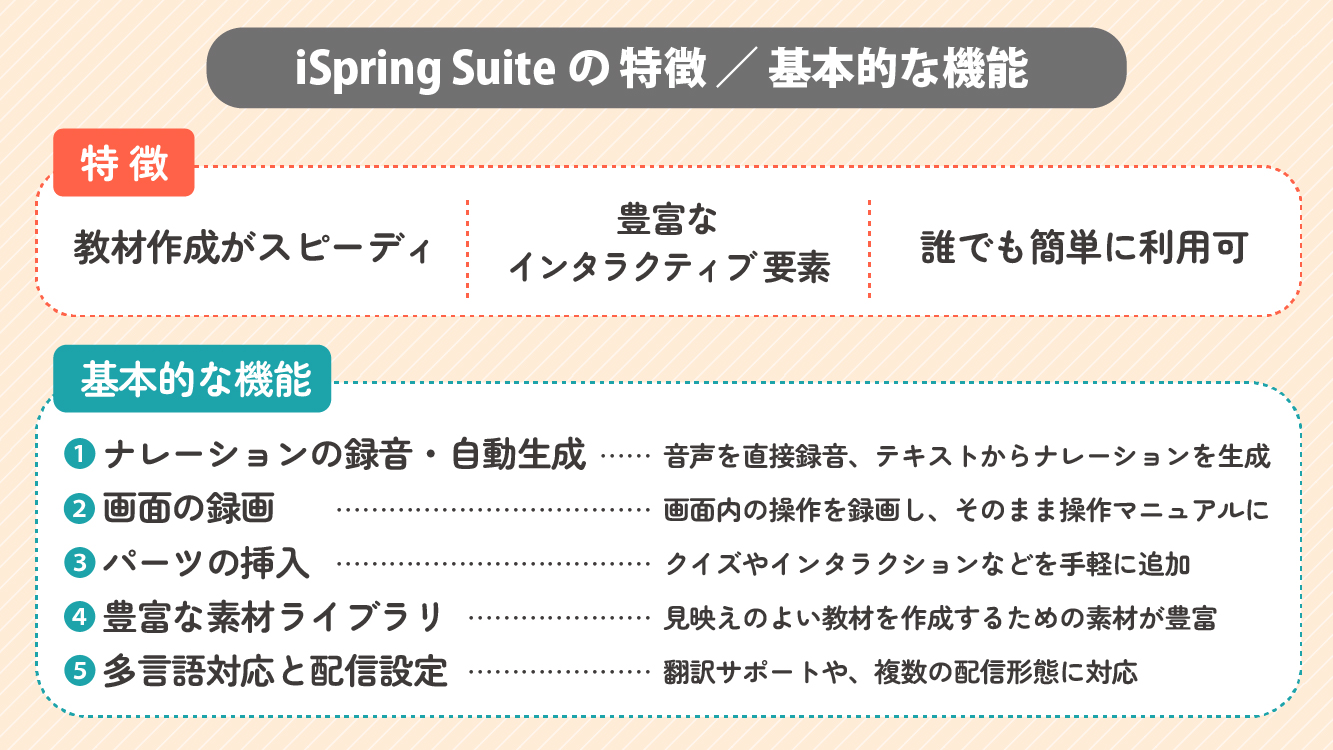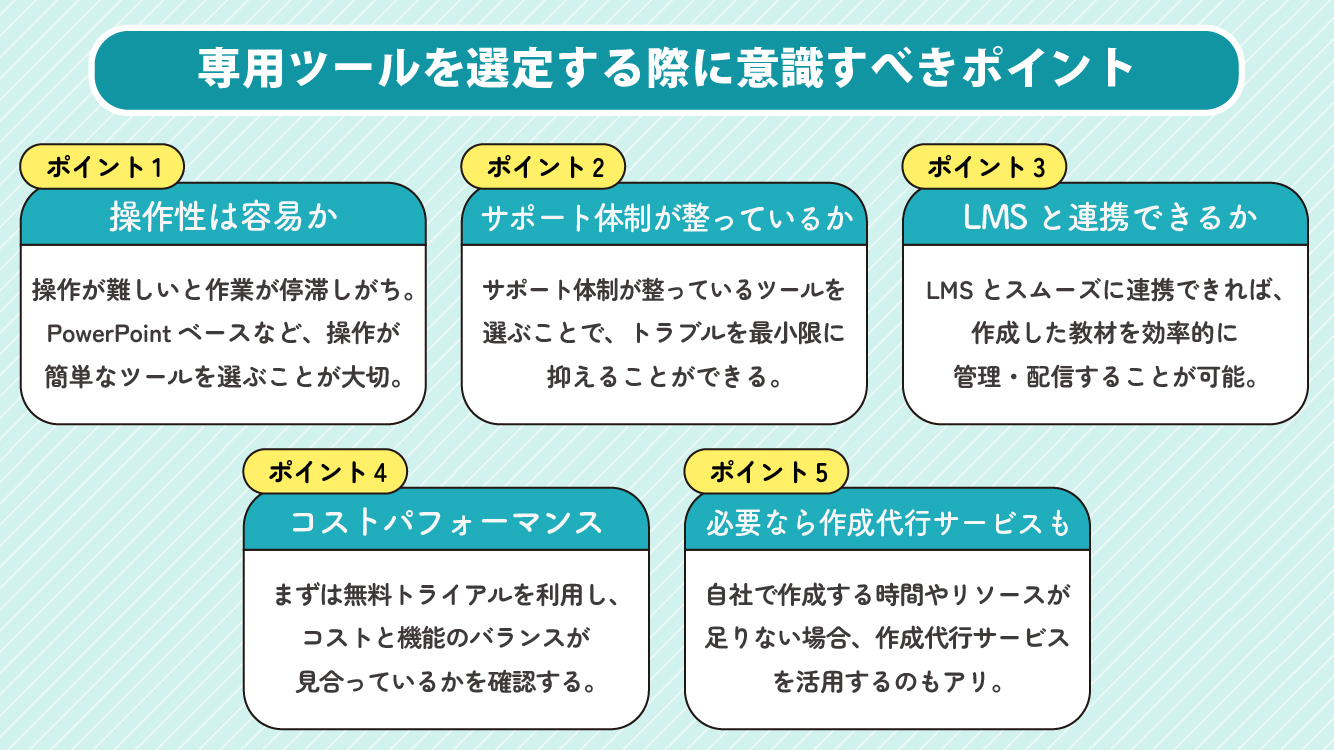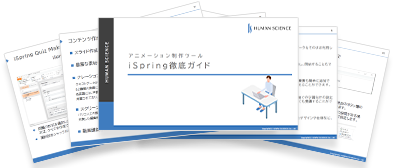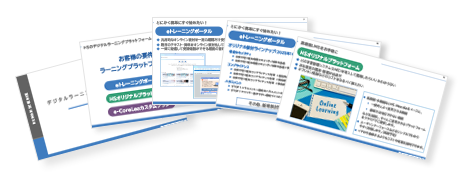2025.04.09
What is the method for creating e-learning materials? We will also introduce examples of dedicated tools, the creation process, and key points for selection.

As e-learning becomes widespread and its use in corporate training and educational settings advances, there is growing attention on the creation of high-quality teaching materials that influence the "quality of education." However, for those who are attempting to create teaching materials for the first time, concerns such as "where to start" and "what tools to use" are common. In this article, we will clearly explain specific steps that are helpful for creating e-learning materials, recommend dedicated tools, and provide points to consider when selecting tools.
1. How to Create e-Learning Materials

There are several options for creating e-learning materials. We have summarized the features of each option by dividing them into advantages and disadvantages. Choose the appropriate method according to your company's needs and budget.
●How to Create.1 Utilize PowerPoint
Benefits
・Creation can be done at a relatively low cost in a short period
・Suitable for teaching materials that require frequent updates
・Possible to add animations, narration, and embed videos
Disadvantages
・In the case of voluminous materials, production and data management tend to become complicated
・Implementing interactive features can be difficult
●How to Create.2 Utilize Dedicated Tools
Benefits
・Rich features specialized for e-learning materials
・Easy conversion of existing materials into teaching materials
・Easy creation of video materials and operation manuals
Disadvantages
・There are costs associated with the introduction and use of tools
・Training and learning to operate are necessary
・There may be limitations on capacity and functionality
●How to Create.3 Record Offline Training
Benefits
・It is possible to use recorded data as teaching materials
・If there is already recorded data, it can be effectively utilized
Disadvantages
・It can become redundant, and viewers may lose focus
・If video editing is required, specialized software and skills are necessary
●How to Create.4 Outsourcing
Benefits
・High-quality materials can be produced by professionals
・Eliminates the hassle of in-house production
・Content can be refined from a third-party perspective
Disadvantages
・It takes time to issue instructions for corrections and adjustments
・It is costly and requires a significant amount of time before delivery
・It is not uncommon that source data cannot be easily edited in-house
Each method has its pros and cons. Consider the purpose of the materials, budget, and frequency of updates to choose the best method. In some cases, combining multiple methods can also be effective.
2. A tool for easily creating e-learning materials, "iSpring Suite"

We have learned that there are various methods for creating e-learning materials. In particular, dedicated tools are being widely used by many companies because they allow for the easy creation of high-quality materials.
Among the dedicated tools, "iSpring Suite" is highly regarded for its ease of use and high functionality. Here, we will explain the overview, features, and basic functions of iSpring Suite.

What is iSpring Suite?
This is an all-in-one toolkit for creating e-learning content. No specialized knowledge is required, and you can work in the familiar PowerPoint environment, making it easy to create engaging content.
Features of iSpring Suite
・Speedy Material Creation: With an easy-to-use interface and a variety of features, high-quality materials can be created in a short period of time
・Rich Interactive Elements: Quizzes, tests, videos, audio, and interactive presentations can be easily incorporated
・Easy for Anyone to Use: While it is user-friendly for beginners, it also achieves a professional finish
Basic Features of iSpring Suite
iSpring Suite offers a wide range of features necessary for creating e-learning materials. Here are its main features.
1. Narration Recording and Auto-Generation
Directly record audio or generate narration from text
2. Screen Recording
Record operations on the screen and use them as an operation manual
3. Inserting Parts
Easily add quizzes, interactions, dialogue simulations, YouTube videos, web objects, and more
4. Rich Material Library
Create visually appealing teaching materials using slide templates, character images, background designs, and icon materials
5. Multilingual Support and Distribution Settings
Support for translation through text data export/import and compatibility with multiple distribution formats, including publishing in SCORM format
For detailed explanations, please check the following from our past blog.
>What is iSpring Suite? Features, Pricing, and Benefits of Implementation
>Introducing How to Use iSpring Suite! Let's Create e-Learning Materials
3. Explanation of the process for creating e-learning materials using dedicated tools

Creating effective e-learning materials requires careful planning and design. Below, we will explain the process of creating materials using dedicated tools step by step.
Step 1: Clarification of Purpose, Target Audience, and Goals
First, let's clarify the purpose of the teaching materials. By specifying the target learners (e.g., new employees, sales staff, etc.), learning time, and the goals to be achieved through education, appropriate content and approaches will be determined. This stage serves as the foundation for creating the teaching materials.
Step 2: Design and Schedule Setting
Next, we will create the outline of the teaching materials and design the structure and table of contents. At this stage, let's organize the flow of the learning content and set the schedule for completion. If using specialized tools, it is important to consider designs that leverage the features of the tools (e.g., adding interactive elements such as quizzes).
Step 3: Create Teaching Materials Using Dedicated Tools
Based on the design, we will create teaching materials using dedicated tools. Let's make the most of various tools and features to work efficiently.
Step 4: Third-Party Review and Feedback
It is recommended to have the created materials reviewed by a third party before distribution. At this stage, it is important to incorporate feedback from the learner's perspective. Additionally, check for consistency in content and any typographical errors, and continuously refine the quality of the materials through revisions.
Step 5: Start Distribution and Operation
After revisions, the completed materials are distributed to learners, and operations begin. You can monitor the learning status and have participants respond to surveys, making improvements as needed to further enhance the effectiveness of the materials.
By being mindful of these steps, you can create effective and efficient e-learning materials. Additionally, utilizing dedicated tools can help reduce the workload, leading to the expectation of providing higher quality materials.
4. Points to Consider When Selecting Dedicated Tools
To create e-learning materials efficiently and effectively, choosing the right tools is key. Here, we will introduce the points to keep in mind when selecting tools.

Point 1: Choose a Tool with Easy Usability
Especially when creating e-learning materials for the first time, if the operation is difficult, work tends to stagnate. Therefore, it is important to choose a tool that is easy to operate. For example, tools based on PowerPoint, such as iSpring Suite, allow for a smooth workflow by utilizing an interface that many people are familiar with. Additionally, the ability to update and manage using PowerPoint files in-house is also appealing.
Point 2: Choose a service with operational support
For e-learning beginners, a support system that can resolve questions and issues that arise during implementation and operation is crucial. By selecting tools with a well-established support system, such as dedicated help desks, online chat, and consultation services for customization, you can minimize troubles.
Point 3: Integration with LMS
To efficiently manage and deliver the created educational materials, tools that can smoothly integrate with a Learning Management System (LMS) are necessary. In particular, check whether it supports SCORM or xAPI to easily track the progress and understanding of the participants.
Point 4: Cost Performance
It is important not only that the tool's price fits within the budget, but also that the features provided are worth the price. Many tools offer a free trial period, so let's first utilize it for free and check the balance between cost and functionality.
Point 5: It is also a good idea to utilize creation outsourcing services as needed
If you lack the time or resources to create materials in-house, utilizing creation outsourcing services is one option. By using these services, it becomes possible to obtain high-quality materials created by professionals in a relatively short period of time.
By referring to these points and selecting dedicated tools that match your company's needs and the skill level of the creators, you can create more effective and engaging educational materials.
5. Summary

In the creation of e-learning materials, it is not an exaggeration to say that the selection of the creation method and its effective utilization greatly influence the quality of the materials. Particularly, by using dedicated tools for efficient production, and tools like iSpring that allow intuitive operation based on PowerPoint, you can easily create engaging materials.
Human Science, a certified reseller of iSpring, provides extensive support for the introduction, operation, and even creation of iSpring products. If you are having trouble selecting tools or creating teaching materials, please feel free to consult us.
You can check the details of our services on the Human Science e-learning site.
>Create rich e-learning materials with your familiar PowerPoint
>iSpring product implementation/creation support
Understand the features and usage of iSpring Suite / iSpring MAX!Complete Guide to iSpring

This section introduces the overview and usage of the animation teaching material production tool "iSpring."
This book provides a complete understanding of iSpring. You will also have an image of the teaching material production after implementation.
【Contents】
- What is iSpring Suite / iSpring Suite MAX
- How to create teaching materials using iSpring Suite / iSpring Suite MAX
- Overview and Utilization of iSpring Suite (MAX)
- Features of iSpring Suite (MAX)
- Specific Usage of iSpring Suite (MAX)
- iSpring Suite (MAX) Certified Reseller
- Introduction to Human Science












